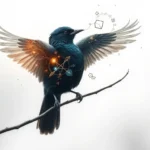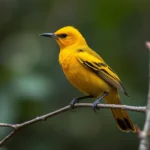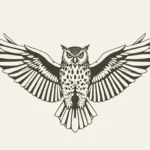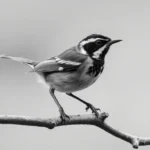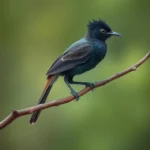The European Robin: A Symbol of Hope and New Beginnings
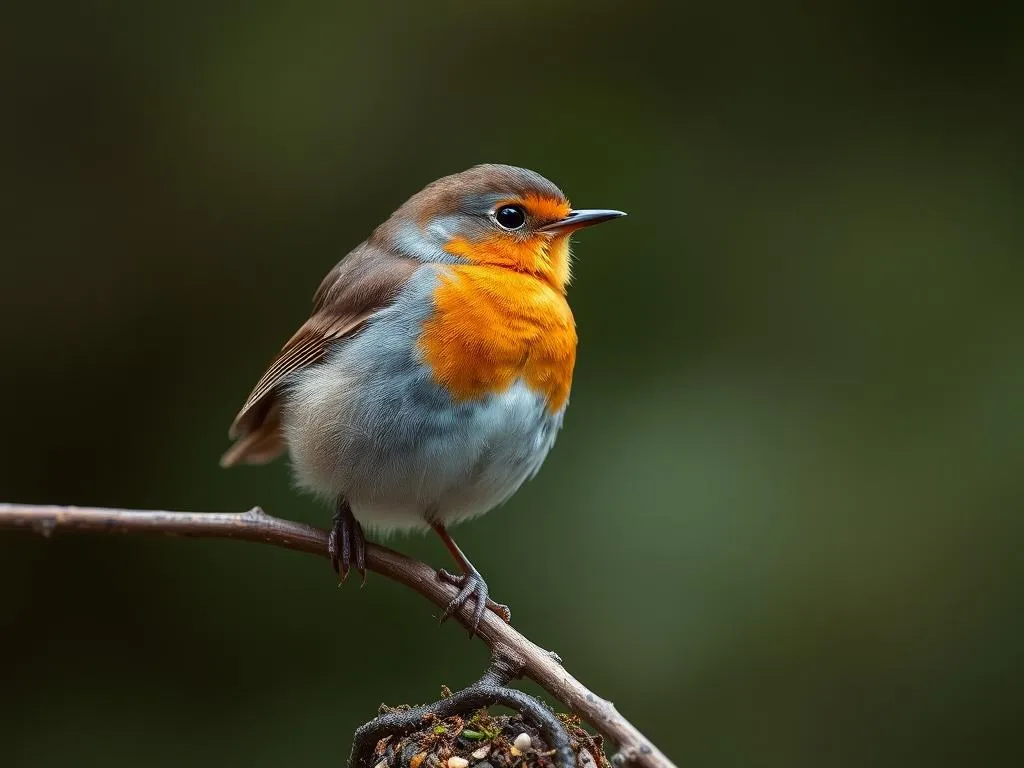
Disclaimer: Some images on this website are AI-generated artworks and may not accurately represent real animals.
The European Robin is a beloved bird known not only for its charming appearance but also for its rich symbolism and meaning. Often associated with hope and renewal, this small creature captures the essence of spring and the beauty of nature. In this blog post, we will explore the various aspects of the European Robin, including its physical characteristics, behavior, and the profound symbolism it carries across cultures.
Understanding the European Robin
Physical Characteristics
The European Robin (Erithacus rubecula) is easily recognizable due to its distinctive features. Below is a table summarizing its key physical traits:
| Characteristic | Description |
|---|---|
| Coloration | Bright orange-red breast, brownish-grey back |
| Size | Approximately 12.5 to 14.5 cm in length |
| Weight | Around 12 to 20 grams |
| Wingspan | 20 to 22 cm |
| Habitat | Commonly found in gardens, forests, and parks |
The vibrant red breast of the European Robin is particularly striking against its soft, brown-grey back. This contrast not only makes it visually appealing but also serves an important purpose in the wild. The robin’s size and habitat preferences allow it to adapt well to various environments, making it a familiar sight in many European gardens and parks.
Behavior and Habits
The European Robin is known for its curious and bold behavior. It often approaches humans, searching for food and showing little fear. This personality trait has made it a symbol of friendliness and sociability.
Nesting Habits and Territorial Nature
Robins are highly territorial, especially during the breeding season. They build their nests in hidden locations, often found in hedges, shrubs, or even in the nooks of human-made structures. The female typically lays between three to six eggs, which she incubates for about two weeks. After hatching, both parents are involved in feeding the chicks, showcasing their cooperative nature.
Unique Vocalizations and Song
One of the most enchanting aspects of the European Robin is its song. Robins are known for their melodious tunes, which they use to establish territory and attract mates. Their vocalizations vary throughout the year, with more pronounced singing occurring in the spring. The robin’s song is often associated with the arrival of warmer weather, symbolizing renewal and the promise of new life.
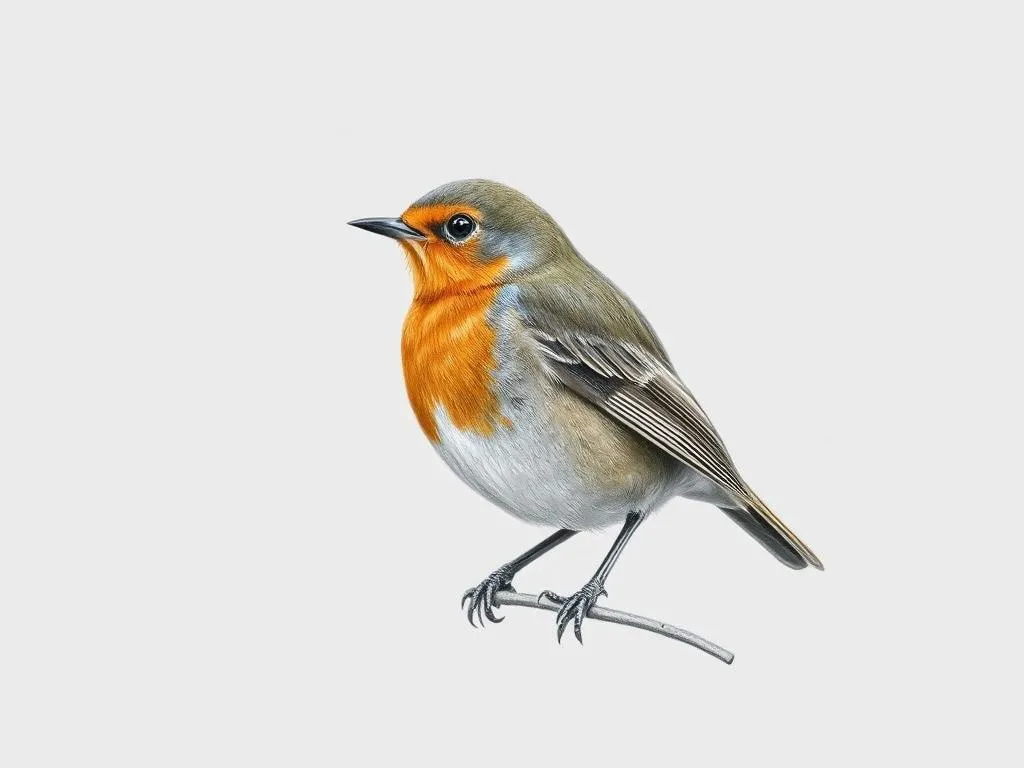
Symbolism & Spiritual Meaning
Representation of Hope and Renewal
The European Robin holds significant symbolic meaning, particularly as a representation of hope and renewal. Its arrival in early spring is seen as a herald of warmer days and the end of winter’s gloom. This connection to spring aligns with the broader theme of rebirth and new beginnings, making the robin a powerful emblem in various cultures.
Cultural Significance in Various Traditions
In many European traditions, the robin is celebrated as a symbol of spring. In folklore, it is often viewed as a sign that nature is awakening, bringing with it the promise of growth and vitality. Its bright red breast has also been interpreted as a symbol of love and passion, further enhancing its positive associations.
Messenger of Change
The European Robin is often regarded as a messenger of change. In folklore, it is believed to guide individuals during significant life transitions, such as moving to a new home or starting a new job. This idea extends to personal growth and transformation, where the robin serves as a reminder to embrace change and the opportunities it brings.
Associations with Personal Growth and Transformation
Seeing a robin can inspire individuals to reflect on their own personal journeys. The robin’s resilience and adaptability encourage us to face life’s challenges with courage. It serves as a reminder that change is a natural part of life, and with it comes the potential for growth and renewal.
Connection to the Afterlife
Historically, the European Robin has been linked to the afterlife and spiritual realms. Many cultures believe that robins act as spiritual messengers for departed loved ones. Their presence can bring comfort to those grieving, reinforcing the idea that our loved ones are watching over us.
Perspectives on the Robin as a Spiritual Messenger
In various traditions, robins are seen as signs of reassurance from the spirit world. When one appears unexpectedly, it is often interpreted as a message of love and guidance from those who have passed on. This connection to the afterlife adds another layer of significance to the European Robin, making it a cherished symbol of hope and connection.
The European Robin in Dreams
Interpretations of Robin Sightings
The appearance of a European Robin in dreams can carry profound messages. Dreaming of a robin often signifies love, guidance, and new opportunities. It can indicate that you are entering a phase of renewal in your life, encouraging you to embrace the changes ahead.
Common Dream Scenarios
The following table outlines common scenarios involving robins in dreams and their interpretations:
| Dream Scenario | Interpretation |
|---|---|
| Dreaming of a robin singing | A sign of joy and positivity; embrace new beginnings |
| Seeing a robin nesting | Symbolizes stability and nurturing; focus on building roots |
| Encountering a robin during significant events | Represents guidance; suggests that you are on the right path |
Dreams involving robins often resonate deeply with our emotions, guiding us toward self-reflection and personal insight. Whether it is through their sweet song or their nurturing behavior, robins remind us to pay attention to the messages our subconscious is conveying.
Modern Interpretations
The European Robin in Art and Literature
The European Robin has inspired countless works of art and literature throughout history. Its depiction in poetry often highlights themes of love, loss, and renewal. From classic literature to modern stories, the robin serves as a powerful symbol of the human experience, capturing emotions that resonate with many.
Symbolic Roles in Contemporary Media
In contemporary media, the robin continues to be a beloved character. It is often portrayed as a harbinger of good fortune and a symbol of hope. The robin’s presence in films, books, and songs reinforces its status as a cherished figure in popular culture.
Cultural Variations
While the European Robin holds universal symbolic meanings, its significance can vary across different European countries. For example, in some cultures, robins are associated with Christmas and are seen as symbols of giving and warmth. In others, they are viewed as messengers between the living and the dead.
The Robin’s Significance in Modern Spirituality
In modern spirituality, the European Robin is often regarded as a spirit animal or totem. Those who resonate with the robin may find it guides them towards new opportunities and encourages them to embrace their inner strength. The robin’s ability to thrive in various environments serves as a reminder to remain adaptable in our own lives.
Key Takeaways
- The European Robin symbolizes hope and renewal, particularly in relation to spring.
- It acts as a messenger of change, guiding individuals through personal transformations.
- The robin is linked to the afterlife, providing comfort to those grieving the loss of loved ones.
- In dreams, robins often represent love, guidance, and new opportunities.
- The robin has a rich presence in art and literature, showcasing its enduring significance across cultures.
Conclusion
The European Robin stands as a powerful symbol of hope and spiritual guidance. Its vibrant presence in nature reminds us to appreciate the beauty and renewal that each season brings. As we observe these enchanting birds, we are encouraged to reflect on their messages of love, transformation, and the profound connections we share with the natural world. The legacy of the European Robin continues to thrive in both historical and modern contexts, making it a cherished emblem of inspiration and resilience.
